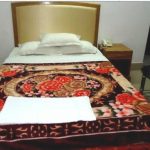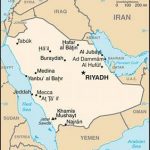Perhaps Bangladesh government’s most significant decision in realizing the Digital Bangladesh dream is to provide 3G (third generation) technology licenses which will be issued through auction.
But what will happen when 3G finally arrives? Let’s take a brief look into the technology and how we may expect it to change our lives.
At present we enjoy moderate speed internet connectivity on our mobile phones through EDGE (Enhanced Data GSM Environment) or GPRS (General Packet Radio Service) technologies.
3G is an ITU (International Telecommunication Union) specification for the third generation of mobile communications technology, which will provide high speed data connectivity on mobile devices such as 3G enabled mobile phones or modems.
Although the ITU has not given a clear definition of its data rate, basic 3G is expected to provide increased bandwidth, with a minimum speed of 2Mbit/s for stationary or walking users, and 348 kbit/s in moving vehicles.
However, 3G has evolved more with latest technologies such as HSPA (High Speed Packet Access) which supports increased peak data rates of up to 14 Mbit/s in the downlink and 5.76 Mbit/s in the uplink. This might be the technology that will be available in Bangladesh.
Furthermore advanced technologies such as LTE (Long Term Evolution) that provides downlink peak rates of at least 100 Mbps, an uplink of at least 50 Mbps are currently available in many parts of the world.
With the use of these technologies, functions such as sending and receiving information and data regardless of the time and location will be much faster than we experience now. This is the latest mobile technology and is now the fastest growing host among mobile units and handsets. 3G provides you with the highest speed possible, compared to its predecessors.
We can have almost full use of our smartphones, which we are unable to do now. Some of the services include video calling or conferencing, tele-medicine, location based services, video on demand and mobile TV.
3G technology can make tele-medicine services available in remote areas of the country. In 2007 Ericson Bangladesh had successfully demonstrated the advantages of 3G in tele-medicine services through a pilot project in Dhaka.
Benefits of the 3G also include packet-based data that offers a number of advantages over the existing circuit-switched methods used for transporting mobile voice.
It allows increased call volumes and support for multimedia data applications, such as video and images.
The first commercial launch of 3G was done by Japan’s NTT DoCoMo in 2001 on a W-CDMA technology, although the technology was very limited in terms of scope at the beginning. The broad availability, due to inadequate reliability had to be delayed.
Eventually, 3G was successfully launched and introduced to millions of consumers across the globe.
Now that we are at the threshold of having 3G in Bangladesh, the only concerning factor is the price. If operators have to pay a higher price to obtain the 3G spectrum, presumably they will increase the call and other service charges.





